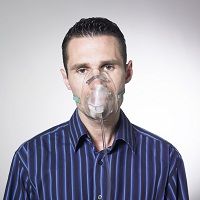Article
Ventilation and Oxygen Best for COPD Patients during Exercise
Author(s):
During exercise training, noninvasive ventilation was found to be beneficial in patients with chronic obstructive pulmonary disease (COPD).

During exercise training, noninvasive ventilation was found to be beneficial in patients with chronic obstructive pulmonary disease (COPD), according to findings presented at the CHEST 2015 meeting in October in Montreal.
Researchers from Ege University Department of Biostatistics in Turkey analyzed 35 patients in order to evaluate the effects of noninvasive ventilation and supplemental oxygen during exercise training. The patients had an average age of about 65 years and were randomized into groups to either receive noninvasive ventilation and supplemental oxygen during exercise training, only supplemental oxygen during training, or just exercise training alone. The exercise program lasted for 8 weeks and noninvasive oxygen was varied out with oxygen during the training period.
The COPD patients in the noninvasive ventilation plus supplemental oxygen group demonstrated multiple physiological benefits. The supplemental oxygen during exercise training aided the patients’ ability to reduce hyperinflation and improve respiratory muscle function and exercise capacity, the researchers reported. There were no significant changes in the exercise training group alone. In the two intervention groups, the patients showed improvement in depressive symptoms and in total walking distance.
There was a decrease in total lung capacity in patients with both noninvasive ventilation and oxygen therapy during the exercise program, but this was not present in the oxygen supplement only cohort.
“The study concluded that adding noninvasive ventilation to oxygen during exercise training in patients with severe COPD was a useful adjunct for improving breathlessness,” Mark J. Rosen, MD, Master FCCP, CHEST Medical Director, explained in a press release. “It reduced hyperinflation and rates of depression, while improving respiratory muscle strength and quality of life measures.”
The researchers believe that clinicians should use noninvasive ventilation during exercise training regiments in severe COPD patients, and added that it is the best adjunct for improving dyspnea.
“Adding noninvasive ventilation to oxygen during exercise training in patients with severe COPD patients is the best adjunct for improving dyspnea by reducing hyperinflation, respiratory muscle strength, exercise capacity, quality of life and depression,” the authors concluded. “We recommend clinicians to use non-invasive ventilation during exercise training in severe COPD patients.”




